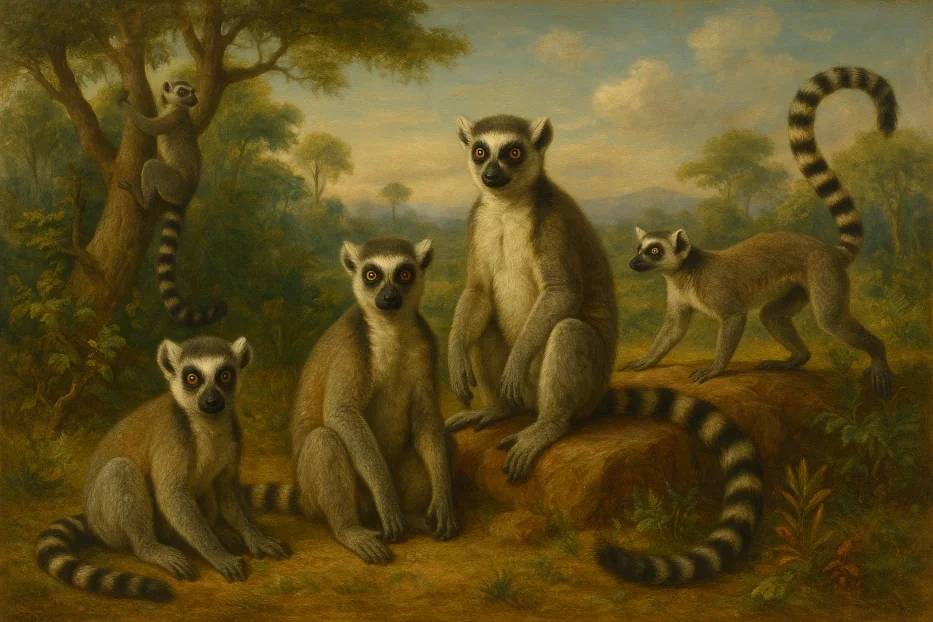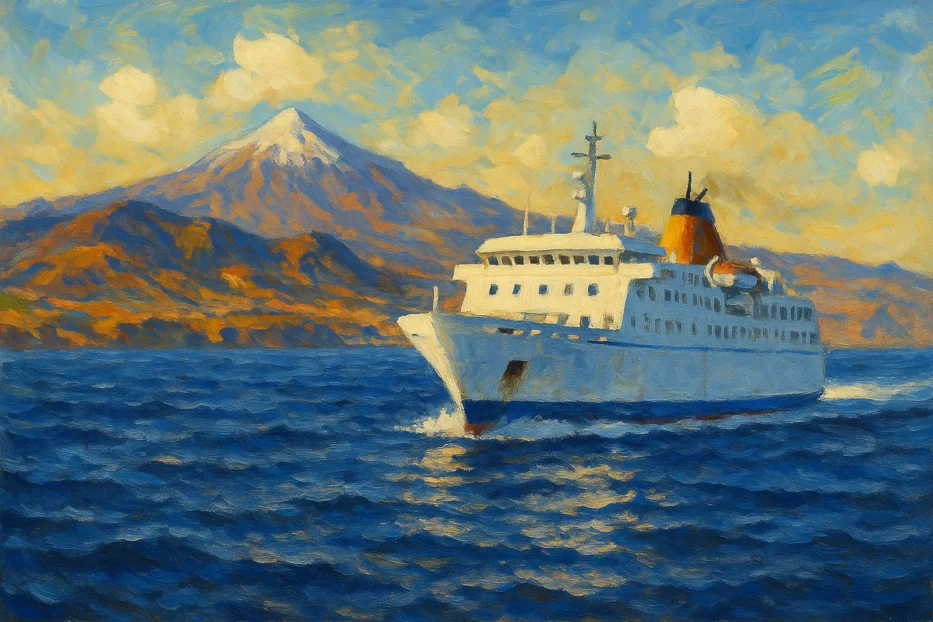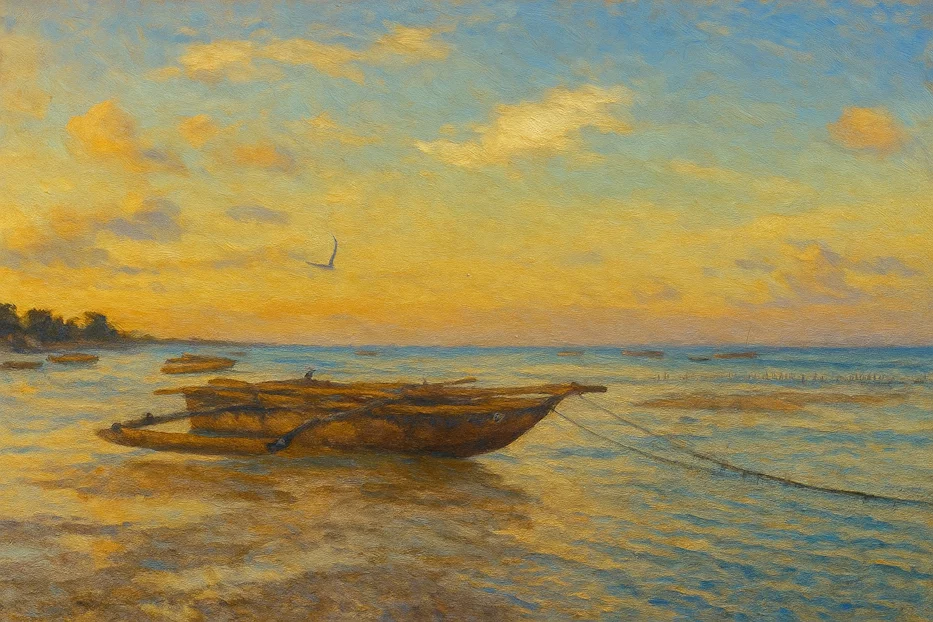From the giant of Madagascar to the volcanic Canary Islands, let’s explore the 10 largest islands in Africa by area.
When people imagine Africa, they usually picture vast deserts, endless savannas, and wild safaris. Yet, beyond the mainland, Africa and its surrounding seas are home to some of the most fascinating islands on Earth. These islands boast unique cultures, rich biodiversity, and breathtaking landscapes.
Table of Contents
1. Madagascar
Madagascar (592,796 km² /228,880 sq mi) is not only the largest island in Africa, but also the fourth largest in the world. Separated from mainland Africa around 88 million years ago, it has evolved into one of the most biodiverse places on Earth. Over 90% of its wildlife is endemic — meaning it exists nowhere else.
Famous for its lemurs, towering baobab trees, and spiny forests, Madagascar is a natural wonderland. Its landscapes range from rainforests in the east to dry savannas in the west and arid spiny deserts in the south. Beyond nature, Madagascar has a rich cultural heritage influenced by African, Austronesian, and European roots.
Why visit? For adventurers and eco-travelers, Madagascar offers hiking, diving, wildlife spotting, and cultural immersion unlike anywhere else.

Lemurs of Madagascar: How Many Species Are Left and How Many Are in Danger?
Lemurs are not only Madagascar’s most iconic animals but also rank among the world’s most threatened mammals.
2. Socotra
Often referred to as the “Galápagos of the Indian Ocean,” Socotra (3,796 km² /1,466 sq mi) lies off the Horn of Africa but belongs to Yemen. Its isolation has produced a landscape so unusual that it feels otherworldly. The dragon’s blood tree, with its umbrella-shaped crown, is an icon of the island’s surreal scenery.
Socotra is home to hundreds of endemic plant and animal species. The coastline features white-sand beaches and turquoise waters, while the interior has rugged mountains and caves.
Why visit? For travelers seeking rare biodiversity, dramatic landscapes, and remote experiences, Socotra is unmatched.
3. Réunion
Situated east of Madagascar in the Indian Ocean, Réunion (2,512 km² /970 sq mi) is a French overseas department. Volcanic in origin, it is dominated by Piton de la Fournaise, one of the world’s most active volcanoes. The island is known for its steep cirques (calderas), lush forests, and cascading waterfalls.
Despite its rugged interior, Réunion has modern infrastructure and a blend of French and Creole cultures. Its cuisine combines European flavors with Indian and African influences.
Why visit? Adventure tourism thrives here, with opportunities for hiking, canyoning, and paragliding, all in a tropical paradise.
Direct Ferries
Routes, Schedules, Prices
Ferries in Africa
4. Mauritius
The island nation of Mauritius (2,040 km² /790 sq mi) lies east of Madagascar in the Indian Ocean. Known for its turquoise lagoons, coral reefs, and sandy beaches, it is often considered a honeymoon paradise.
Mauritius also has a fascinating cultural blend, with influences from Africa, India, Europe, and China. Its cuisine, festivals, and music reflect this diversity. Inland, visitors can explore volcanic peaks, sugarcane fields, and botanical gardens.
Why visit? Beyond its beaches, Mauritius offers world-class diving, hiking trails, rum tasting, and vibrant multicultural experiences.
5. Tenerife
The largest of Spain’s Canary Islands, Tenerife (2,034 km2 /785 sq mi) lies just off the northwest coast of Africa. Though politically part of Europe, geographically it belongs to the African region. The island is dominated by Mount Teide, a towering volcano and Spain’s highest peak.
Tenerife is famous for its year-round springlike climate, making it one of the most popular holiday destinations in the Atlantic. Visitors enjoy beaches, luxury resorts, and lively festivals like the Santa Cruz Carnival, one of the biggest in the world.
Why visit? With its combination of volcanic landscapes, cultural events, and beach resorts, Tenerife is ideal for both adventure seekers and sun lovers.

How to Travel to Tenerife by Ferry: Routes, Operators & Tips
Take a ferry to Tenerife and enjoy a scenic, flexible, and stress-free way to reach the Canary Islands.
6. Bioko
Part of Equatorial Guinea, Bioko (2,017 km² /779 sq mi) is located in the Gulf of Guinea, off the coast of Cameroon. The island is volcanic, with mountains covered in tropical rainforest. It is home to rare primates and nesting sea turtles, making it ecologically significant.
Bioko also has political importance: Malabo, the capital city of Equatorial Guinea, is located here. Oil discoveries have transformed the island economically, though its biodiversity remains under threat.
Why visit? Bioko offers a mix of vibrant African culture, colonial history, and unspoiled nature.
7. Zanzibar (Unguja)
Part of Tanzania, Zanzibar — often referring to Unguja (1,666 km² /643 sq mi), the main island — is historically known as the “Spice Island.” Its fertile soils produce cloves, nutmeg, cinnamon, and pepper, which fueled centuries of trade.
Stone Town, a UNESCO World Heritage Site, reflects the island’s rich mix of African, Arab, Persian, and European influences. Today, Zanzibar is equally famous for its palm-lined beaches and warm Indian Ocean waters.
Why visit? History lovers and beachgoers alike will find Zanzibar irresistible — a place where culture and paradise meet.

Discover Unguja: Tanzania’s Largest Island
Unguja, the largest of the Zanzibar Archipelago’s islands, rests in the gentle waters of the Indian Ocean, just beyond Tanzania’s mainland.
8. Fuerteventura
Another Canary Island, Fuerteventura (1,660 km² /641 sq mi) is the second largest of the group after Tenerife. Known for its long, sandy beaches and strong winds, it has become a hub for water sports such as surfing, kitesurfing, and windsurfing.
The island’s landscapes are semi-arid, with volcanic hills and desert-like plains. Despite its dry climate, Fuerteventura is a UNESCO Biosphere Reserve thanks to its unique geology and ecosystems.
Why visit? Ideal for beach lovers and surfers, it offers sun, sand, and sea almost year-round.
9. Gran Canaria
Gran Canaria (1,560 km² /600 sq mi), also part of Spain’s Canary Islands, is often called a “mini-continent” because of its varied climates and landscapes. From lush forests in the north to desert dunes in the south, the island packs an incredible diversity into a relatively small area.
Tourism is its lifeblood, with resorts, nightlife, and cultural attractions. The island also boasts charming old towns, mountains, and unique flora.
Why visit? For a mix of beaches, hiking, nightlife, and cultural experiences, Gran Canaria delivers it all.
10. Grande Comore
The largest island of the Comoros archipelago, Grande Comore or Ngazidja (1,025 km² /396 sq mi) sits in the Indian Ocean between Madagascar and Mozambique. It is dominated by Mount Karthala, an active volcano that last erupted in 2007.
Grande Comore is less developed for tourism compared to its neighbors, but that is part of its charm. Visitors can explore volcanic craters, traditional villages, and pristine beaches without the crowds.
Why visit? For travelers seeking authenticity and off-the-beaten-path adventure, Grande Comore is a hidden gem.

